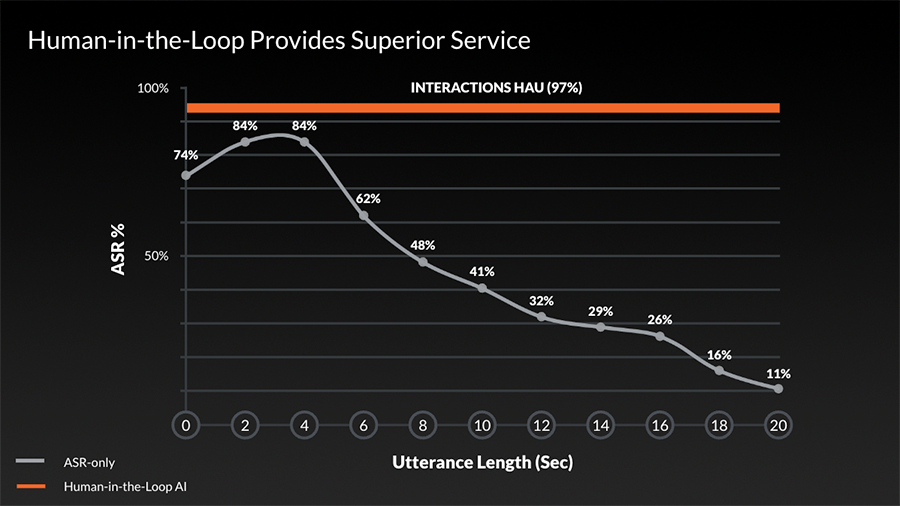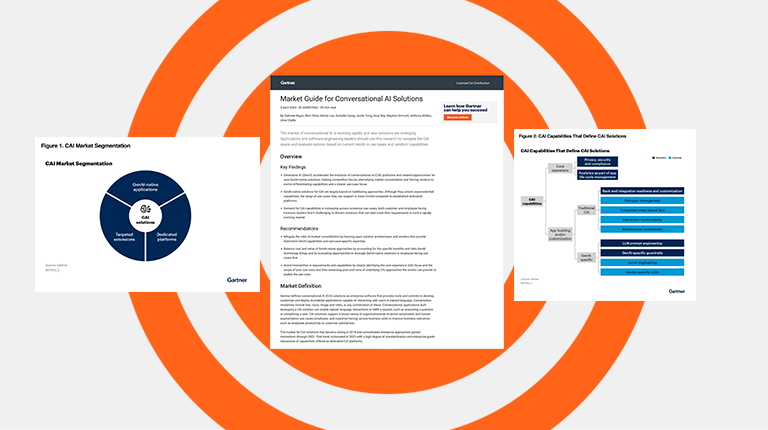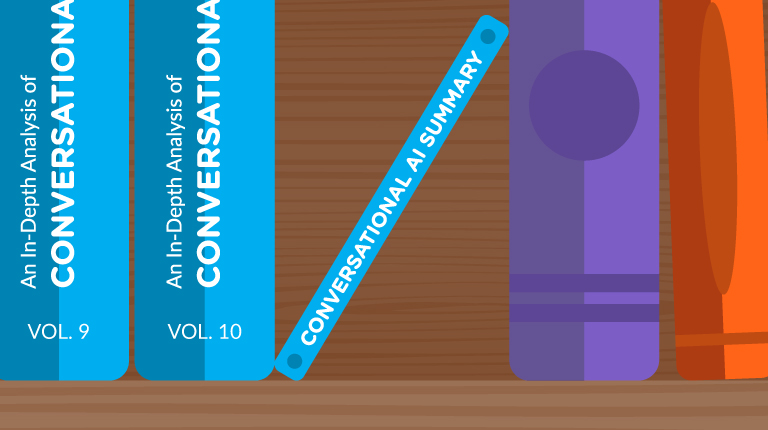How Interactions Has Built a Winning Combination of Humans and Technology
In the world of Intelligent Virtual Assistants (IVAs), a 97% intent accuracy rate is remarkable — we won’t shy away from saying it. But what’s as important as touting this metric is explaining how we achieve it for our clients.
IVA vs. IVR vs. Interactions
First, a quick explainer on where Interactions falls within Interactive Voice Response (IVR) and Intelligent Virtual Assistant (IVA) systems. An IVR is what’s considered “old school” call automation: a menu tree, shouted unnatural instructions by frustrated callers, no personalization or multichannel consistency, and poor containment rates.
An IVA, in contrast, has advanced AI that better understands intent and natural language, well-thought-out business rules that can handle more complex transactions, and system integration and personalization. Overall, IVAs can contain more calls and provide a more human-like experience. Interactions is an IVA – but we’re also quite different than most IVAs.
In this article, we’re going to share how our platform significantly differs from typical IVAs and how humans play a critical role in our incomparable accuracy rates and customer experiences.
The Brain and Ears of an IVA
Each Interactions IVA application is customized for our clients with business rules, dialog development, desired voice and tone, and success metrics. This application is the “brain” of the IVA, which assesses the caller’s intent and applies the business logic (and associated dialog prompts and back-end system integration) to guide the caller to a resolution.
First, an IVA needs “ears” to hear the utterance, i.e., a statement spoken by the caller. Most IVA providers have one ear, which is a Conversational AI engine. The AI engine is composed of automated speech recognition (ASR) and natural language processing (NLP).
To accurately identify intent, such as “pay bill” or “check shipping status,” an IVA must successfully understand what the customer is saying. But no matter how advanced your language models are or how carefully you set up your business logic, customer service calls always include a wildcard: the actual humans calling in. They may be calling from a loud place, mumble, or have a thick accent that’s difficult for the ASR to understand. They may use atypical phrasing that the model wasn’t trained on or have a complex request that goes beyond the business logic the IVA can handle.
With one-ear IVAs, these are all grounds for an escalation to a live agent. Interactions IVAs, however, have two ears due to proprietary Human-Assisted Understanding (HAU). We understand intent with much higher accuracy and can boost containment because our technology enables humans to step in and be the ears without disrupting the call flow.
How Humans Keep Calls Moving and Build Smarter IVAs
For every utterance on a call, the IVA classifies the intent and provides a real-time confidence score. If that score doesn’t meet a certain threshold, a Human Intent Analyst (iA) gets to work with just-in-time assistance. The IVA asks the caller to hold for just a moment. In that moment, the iA can listen to the utterance and select the intent from a menu. They may type in data spoken by the caller, such as a complex email address or unusual street name, that wasn’t understood by the IVA. They also can select a Conversational Handler, which instructs the IVA to respond in a certain way, such as asking the caller to repeat their request, asking them to wait another moment, or sending the call to a live agent.
As the iA communicates the accurate intent and/or data back to the IVA, that now human-labeled information is simultaneously fed back into the Conversational AI Engine, creating a virtual cycle of machine learning.
Turning “No Match” Intents into Further Accuracy Improvements
Another way Intent Analysts improve IVA accuracy over time is by tagging “no match” intents. These are intents that haven’t been built into the business rules and call paths. With a typical “one-ear” ASR-only IVA, “no match” intents are just considered failed and escalated to a live agent.
With Human-Assisted Understanding, Human Intent Analysts label “no match” intents, which Interactions analyzes to uncover patterns and quantify them. Interactions can bring our “no match” reports back to clients to determine how they want to handle them, such as by adding new business rules to expand the IVA efficacy and keep more calls contained.
Excellent Accuracy Even as Utterances Get Longer
An interesting conundrum for ASR-only IVAs is that the more human they sound, the more conversational callers get. This means longer utterances, more complex and even multiple intents, and even rambling stories. Without a human in the loop, the longer an utterance is, the less accurate an ASR-only IVA gets.
In the chart below, you’ll see that after four seconds, there’s a precipitous drop-off in accuracy for ASR-only IVAs and accuracy trends downward as utterances lengthen. However, with humans in the loop, Interactions IVA accuracy holds steady at 97% whether the utterance is three seconds or 20 seconds.
This means that Interactions IVAs can often handle more complex requests than an ASR-only IVA vendor as iAs pluck out intent from lengthy utterances and even help the IVA handle multiple intents.

Accuracy Translated Into Seconds Saved — and Lower Contact Center Costs
What all of this accuracy adds up to is real seconds taken out of the live contact center and saved over millions of calls, which translate into real dollars saved by our clients. More calls are contained and resolved within the IVA flow. And even calls that are escalated can be resolved more quickly. Before a caller hits a live agent, the Interactions IVA has verified the caller’s identity and shared the primary intent with the agent. They can skip the mundane information gathering and get right to the work helping the customer resolve their issue.
The reason that accuracy is so critical to Interactions — and why we’ve gone to painstaking lengths to reinvent how IVAs work (to the tune of 130+ patents) and laser focus on measuring accuracy and other metrics — is because Interactions offers a success-based pricing model. This means you’re only billed when we successfully complete a task according to the success criteria agreed upon in advance.
To find out how much 97% intent accuracy can help you save on call center operational costs while still delivering exceptional customer experiences, visit our IVA Savings Calculator.



